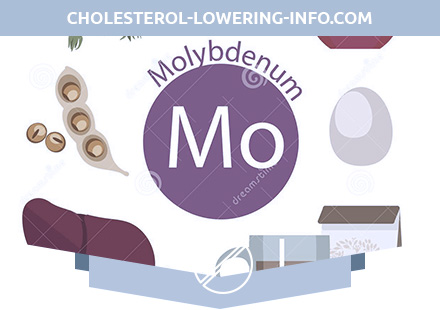What is Molybdenum Deficiency?
Molybdenum is an element of the VI group of the periodic system; at. n – 42, at. m. – 96. The name comes from the Greek. molybdos (lead). Highlighted by P. Gjelm in 1781 (Sweden).
Molybdenum is a silver, shiny, soft metal. In nature, molybdenum occurs in the form of sulfide ores and molybdates of lead or iron. The natural source of molybdenum is the molybdenite mineral; Molybdenum is usually obtained as a by-product of copper production. Molybdenum compounds are used in the production of various alloys, electrodes, mineral fertilizers, and are used as catalysts in the biological fixation of nitrogen.
In medicine, molybdenum radioisotopes are used for diagnostic purposes (liver scan, study of blood circulation in the muscles); They study the effectiveness of ammonium tetramolybdate in the treatment of brain tumors and in male infertility.
Causes of Molybdenum Deficiency (Insufficiency)
- vegetarian diet;
- parenteral nutrition;
- excess tungsten in the body.<
Pathogenesis during Molybdenum Deficiency (Insufficiency)
Molybdenum compounds enter the body with food. Soluble compounds are easily absorbed from the gastrointestinal tract, are absorbed from the lungs, and enter the bloodstream from the sites of parenteral administration.
For a day, 75-250 mcg of molybdenum enters the body of an adult with food. More than half of the molybdenum received in the gastrointestinal tract is absorbed into the blood. Then, about 80% of the molybdenum that enters the bloodstream, binds to proteins (primarily albumin) and is transported throughout the body. In the body, molybdenum accumulates in the liver, and in the blood it is evenly distributed between the formed elements and plasma. Molybdenum does not accumulate in mammals. Soluble molybdenum compounds are excreted in the urine and feces.
The physiological significance of molybdenum for animals and humans was first shown in 1953, with the discovery of the influence of this element on the activity of the xanthine oxidase enzyme. Molybdenum is part of a number of enzymes (aldehyde oxidase, sulfite oxidase, xanthine oxidase, etc.) that perform important physiological functions, in particular, the regulation of uric acid metabolism. The lack of molybdenum in the body is accompanied by a decrease in the content of xanthine oxidase in the tissues. Ammonium thiomolybdate (a soluble salt of molybdenum) is an antagonist of copper and disrupts its utilization in the body. There is evidence that molybdenum plays an important role in the incorporation of fluoride into tooth enamel, as well as in the stimulation of hematopoiesis.
Toxic dose to humans: 5 mg.
Lethal dose for humans: 50 mg.
Symptoms of Molybdenum Deficiency (Insufficiency)
If the body lacks molybdenum (or excess tungsten), the ability to oxidize xanthine to uric acid is impaired, methionine catabolism is inhibited, urinary acid and inorganic sulfate excretion decreases, and the growth rate decreases. Xanthine kidney stones form. Molybdenum deficiency can lead to a decrease in the breakdown of cellulose and excessive accumulation of copper in the body, up to copper intoxication. All these phenomena can be eliminated by adding molybdenum to the diet.
In some parts of the world, endemic diseases are observed associated with the degree of provision of the population with molybdenum (for example, an increase in the incidence of esophageal cancer in the province of Henan, China; Transkei, South Africa).
The main manifestations of molybdenum deficiency:
- decreased activity of molybdenum-containing enzymes;
- irritability, irritability;
- violation of visual (“dark”) adaptation, “night blindness”;
- heart rhythm disturbance (tachycardia);
- increased risk of esophageal cancer.
Diagnosis of Molybdenum Deficiency (Insufficiency)
Assessment of the molybdenum content in the body is based on the results of blood and hair tests. The average content of molybdenum in blood plasma is 0.3-1.2 μg / l, hair 0.02-2.0 μg / g. With excessive intake of molybdenum in the body, its concentration in the urine, plasma (serum) of the blood, and hair increases. Along with this, there is an increase in the content of copper in the urine, ceruloplasmin in the blood serum, an increase in the activity of erythrocyte xanthine oxidase and the concentration of uric acid in the blood serum and urine.
Treatment of Molybdenum Deficiency (Insufficiency)
Molybdenum deficiency can be eliminated with a diet that includes dairy and meat (liver, kidneys, brains) products, legumes, leafy vegetables; as well as the introduction of molybdenum-containing drugs and BADP. The addition of 300 μg of ammonium molybdate to the infusion with full parenteral nutrition prevents the development of molybdenum deficiency.

